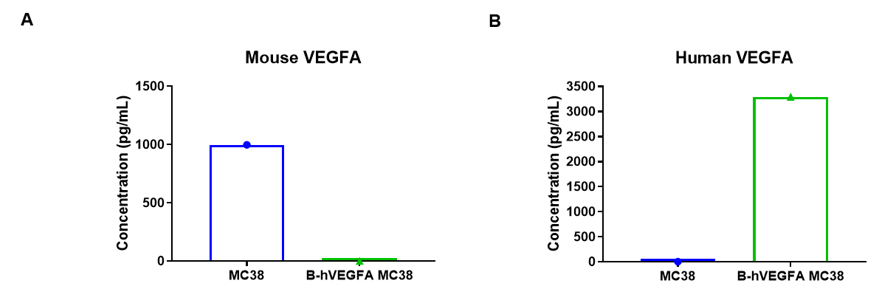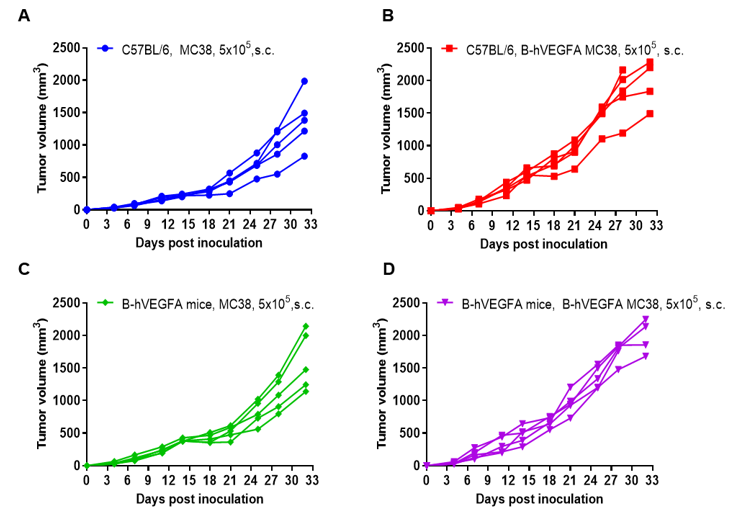B-hVEGFA MC38 (service only)
|
Common name |
B-hVEGFA MC38 | Catalog number | 322309 |
| Aliases | L-VEGF, MVCD1, VEGF, VPF | Disease | Colon carcinoma |
|
Organism |
Mouse |
Strain | C57BL/6 |
| Tissue types | Colon | Tissue | Colon |
This cell line is for service only
Description
Protein expression analysis

VEGFA expression analysis in B-hVEGFA MC38 cells by ELISA. Cell culture supernatant collected from wild-type MC38 and B-hVEGFA MC38, and analyzed by ELISA with species-specific VEGFA kit. Mouse VEGFA was detectable in the culture supernatant of wild-type MC38 cells. Human VEGFA was detectable in the culture supernatant of B-hVEGFA MC38 cells but not in that of wild-type MC38 cells. The 2-C05 clone of B-hVEGFA MC38 cells was used for in vivo experiments.

Subcutaneous homograft tumor growth of B-hVEGFA MC38 cells. Wild-type MC38 cells (5x105) and B-hVEGFA MC38 cells (5x105) were subcutaneously implanted into C57BL/6 and B-hVEGFA mice (female, 8-week-old, n=5). Tumor volume and body weight were measured twice a week. (A) Average tumor volume ± SEM. (B) Body weight (Mean± SEM). Volume was expressed in mm3 using the formula: V=0.5 X long diameter X short diameter2. As shown in panel A, B-hVEGFA MC38 cells were able to establish tumors in vivo and can be used for efficacy studies.

B-hVEGFA MC38 tumor cells growth curve of individual mice. Wild-type MC38 cells (5x105) and B-hVEGFA MC38 cells (5x105) were subcutaneously implanted into C57BL/6 and B-hVEGFA mice (female, 8-week-old, n=5). As shown in panel, B-hVEGFA MC38 cells were able to establish tumors in vivo and can be used for efficacy studies.

Wild-type MC38 cells and B-hVEGFA MC38 cells were subcutaneously transplanted into C57BL/6 mice and B-hVEGFA mice (n=5). At the end of the experiment, Tumor tissue homogenate were assessed for mouse and human VEGFA expression by ELISA. As shown, mouse VEGFA was expressed in the group (G1, G2, G3), human VEGFA was expressed in the group (G2, G3, G4). Therefore, B-hVEGFA MC38 cells can be used for in vivo efficacy studies of novel VEGFA therapeutics.







